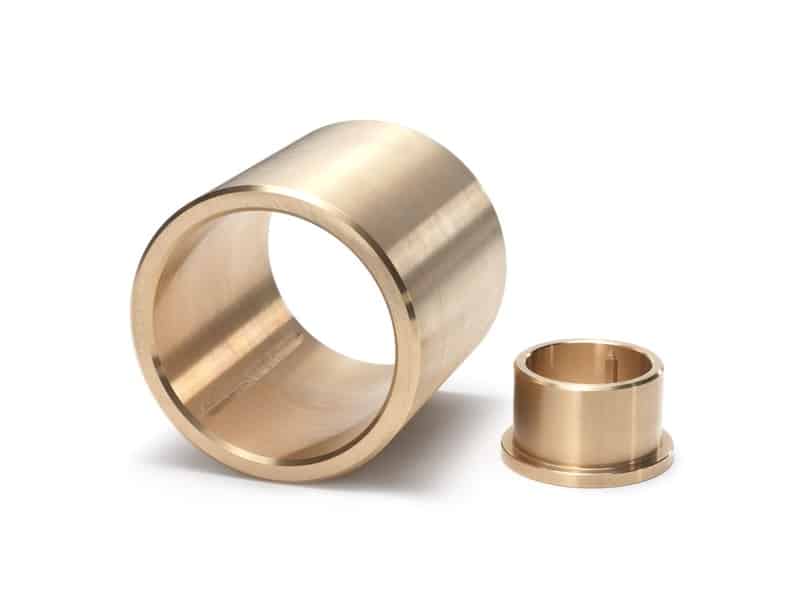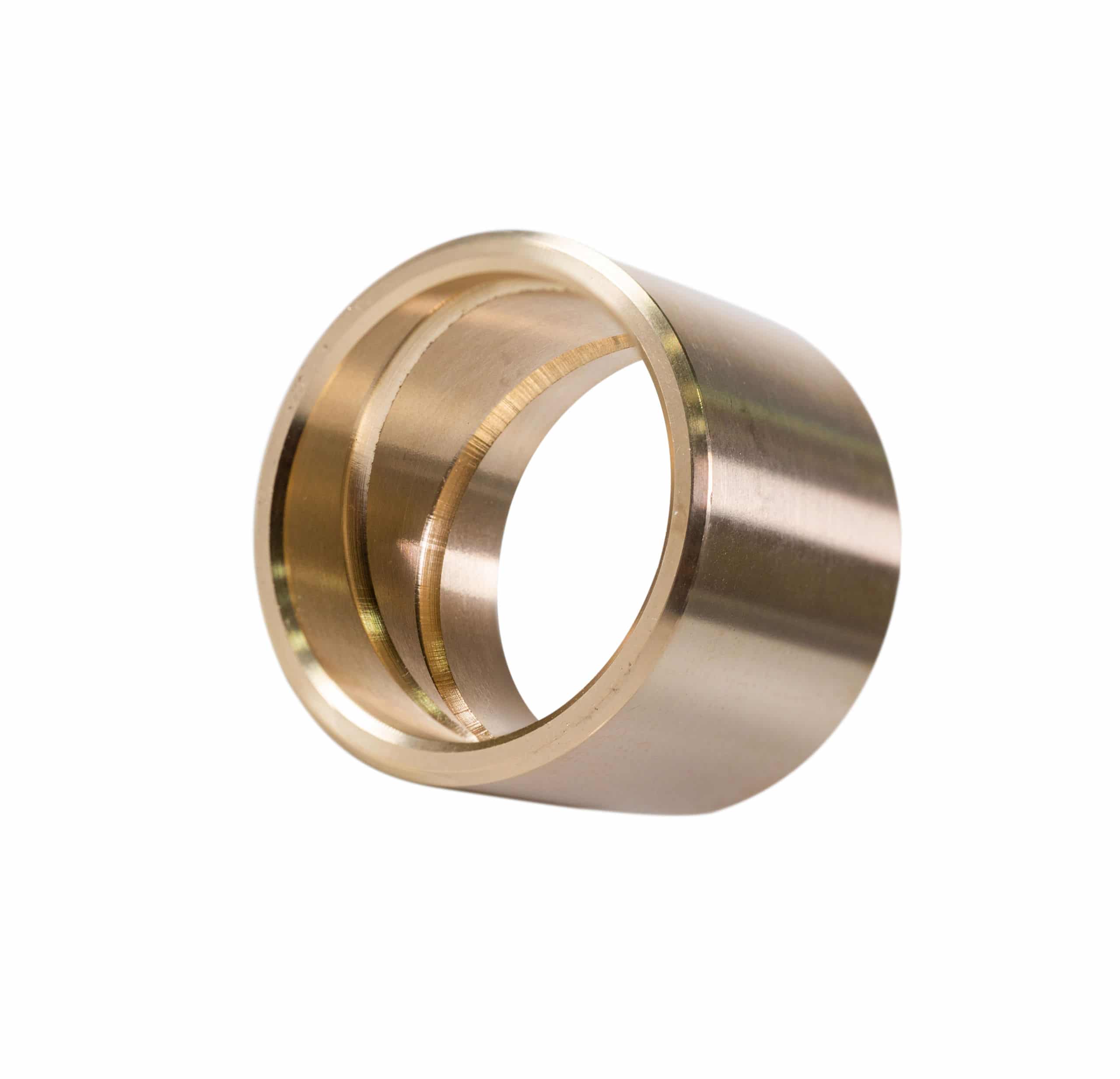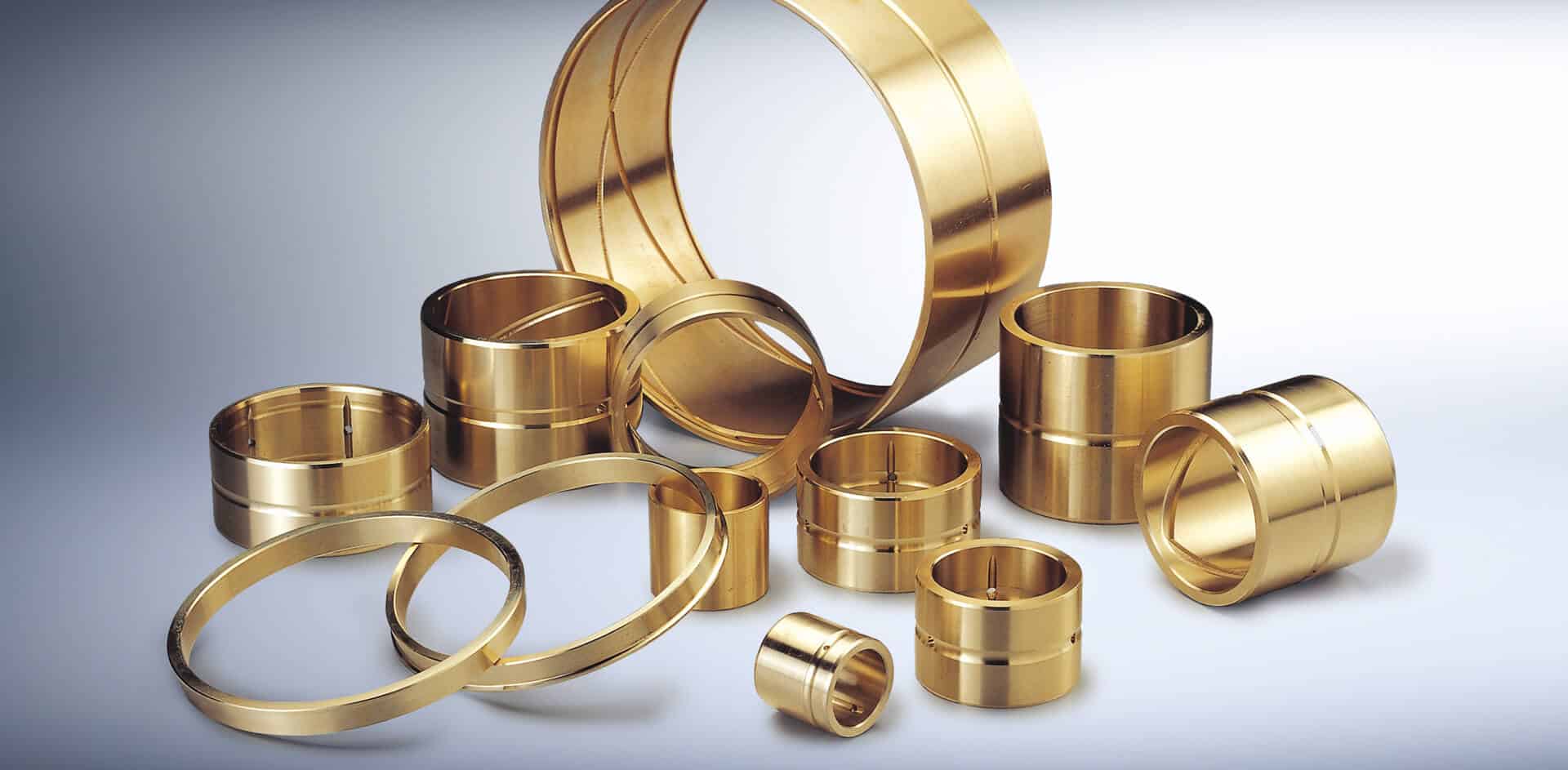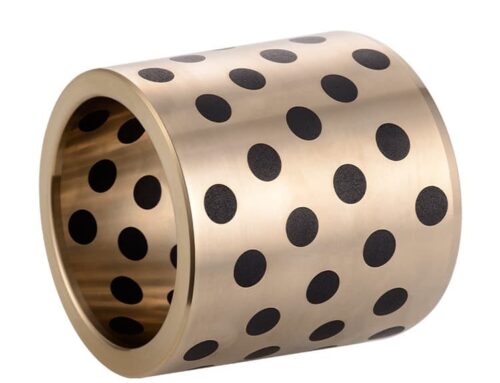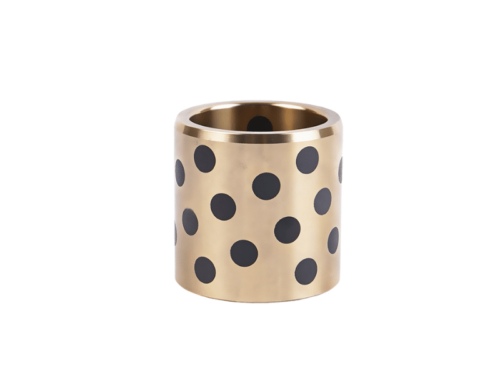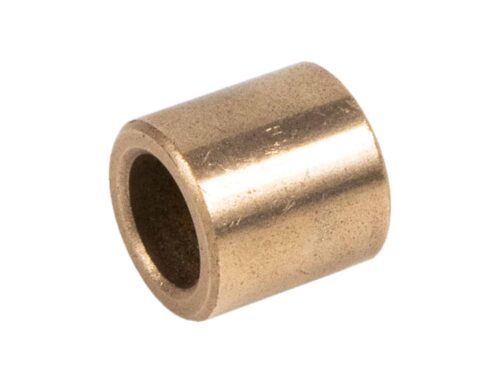Centrifugal Casting Bronze Bearing, Self-Lubricating Bronze Bearing Solutions
Centrifugal casting is a popular method used for manufacturing parts from copper-based alloys like bronze, brass, and copper itself. This process is favored for its ability to produce parts with superior mechanical properties and minimal impurities. Centrifugal Casting, Cast Bronze Bearings!
Here’s a general overview of how a manufacturing company might advertise its services:
We specialize in providing copper alloy bars, plates, and parts designed for a variety of manufacturing and machining needs. Our expertise in centrifugal cast bronze, brass, and copper alloys can save you valuable time and money in research, design, and production costs.
Using the centrifugal casting process, we produce high-quality cylindrical parts including bearings, bushings, tubes, and other components. These cast parts are known for their density, uniformity, and superior mechanical properties that other casting methods may not consistently provide.
Our team of specialists is equipped to handle all types of copper alloys, including various types of bronze and brass. We offer a range of services including casting, machining, and finishing to meet all your manufacturing needs. With our services, you can expect to reduce the time spent in research, design, and production, thereby lowering your overall costs.”
Remember, when choosing a manufacturing partner, it’s important to consider factors such as their expertise, the quality of their products, their turnaround time, and their customer service.

Centrifugal casting is a method of casting metal parts that involves the use of centrifugal force. It was developed around 1850 for the manufacturing of artillery and railway wheels. Today, it is widely used in various industries, including the manufacturing of bushings or bearings from materials like bronze.
The process begins by heating bronze to its melting point and then pouring it into a rotating mold. The centrifugal force generated by the rotation drives the molten bronze towards the mold’s walls, creating a uniform and dense casting. The impurities, being lighter, are forced towards the center and can be easily removed once the casting is complete. This is a key advantage of centrifugal casting, as it tends to produce parts with superior metallurgical properties compared to other casting methods.
When creating a bronze bushing or bearing using the centrifugal casting method, the process may be as follows:
- Melting: The bronze alloy is melted in a furnace to a specific temperature. The alloy composition can be adjusted to achieve the desired properties in the final product, such as hardness, strength, or resistance to wear and corrosion.
- Pouring: The molten bronze is poured into a preheated and rotating mold. The mold can be made of different materials, such as sand or metal, depending on the desired surface finish and dimensional accuracy of the casting.
- Cooling: As the mold rotates, the bronze solidifies from the outer wall towards the center, creating a dense and uniform structure. The mold continues to rotate during the cooling process to ensure even solidification.
- Removal and finishing: Once the bronze is completely solidified, the casting is removed from the mold. It may require further machining or finishing operations to achieve the final dimensions and surface finish.
- Inspection: The final bushing or bearing is inspected for defects and to ensure it meets the required specifications. This can include visual inspection, dimensional checks, and various non-destructive testing methods.
The centrifugal casting method can produce high-quality bronze bushings and bearings with excellent mechanical properties and durability. It’s also a versatile method that can be used to create parts of various sizes and shapes.
Our Cast Bronze Bushings are machined from continuous cast C86300, C93200 (SAE 660) bronze for superior quality and performance.
Oil Groove. Machined cast bronze bearings offer technically and economically favorable bearings solutions.

| Technical Data | |||||
| Material | Brass | Bronze | Bronze | Bronze | Bronze |
| CuZn25Al5 | CuSn5Pb5Zn5 | CuAl10Ni5Fe5 | CuSn12 | CuSn10Pb10 | |
| Density | 8 | 8.9 | 7.8 | 8.9 | 8.9 |
| Yield pointN/mm2 | >450 | >90 | >260 | >150 | >100 |
| Tensile strengthN/mm2 | >750 | >200 | >600 | >260 | >210 |
| Elongation % | >12 | >15 | >10 | >8 | >8 |
| Hardness HB | >210 | >70 | >150 | >95 | >75 |
Centrifugal Casting
Centrifugal casting is widely used for manufacturing cylindrical parts like pipes, tubes, and bearings. The process involves pouring molten metal into a rotating mold. The centrifugal force pushes the metal against the mold walls and it solidifies from the outside in. This method is quite effective because it results in a component with fewer impurities and a denser grain structure, which in turn enhances the mechanical properties.
Centrifugally cast bronze bearings are widely sought after due to their superior durability and strength. The casting’s wall thickness is determined by the volume of the metal poured into the mold. However, due to the nature of the process, the interior diameter of the part is always circular.
Sand Casting
Sand casting, on the other hand, is more versatile in terms of the shapes and sizes of components that can be produced. It starts with creating a pattern in the shape of the desired part. This pattern is placed in a box, known as a flask, and surrounded with sand mixed with a binding agent that helps it retain its shape. After the mold has cured, the pattern is removed, leaving behind a hollow cavity in the shape of the part.
Molten bronze is then poured into this cavity, allowed to cool and solidify, forming the part. Once the metal has cooled and hardened, the sand mold is broken away. The resulting casting can be used as is, or may undergo further processes such as machining or surface finishing to achieve the desired specifications and finish.
Each of these methods has its advantages and is chosen based on the requirements of the final component – the size, shape, and desired physical and mechanical properties. For example, if a cylindrical component with superior mechanical properties is required, then centrifugal casting would be a good choice. For components with more complex shapes or larger sizes, sand casting may be more appropriate.
The cast bronze bushings basic features
Bronze bushing is a kind of high force brass bearing lubricated by groove gushing oil. The product has the function of traditional tin bronze bearing, because of the use of high force brass (ZCuZn24Al6), its HB hardness is doubled, so in low speed occasions, the life of the product can be twice longer than the general bronze sleeve, and its bearing pressure is large, can adapt to the use of heavy duty occasions. At present, the product is mainly used in excavator joints and large gear box.
Materials for CNC: Custom Metal and Bronze Parts
When it comes to CNC machining, selecting the right material is crucial for ensuring optimal performance and durability of the finished parts. Among the various materials available, bronze stands out due to its excellent machining properties and wide range of applications. Here’s a closer look at the characteristics and specifications of cast bronze bearings and bushings, tailored specifically for CNC applications.
Cast Bronze Bearing Characteristics
The design of cast bronze bearings often targets applications where oiling is minimal or not possible. The primary objective in these scenarios is to ensure that the bearing can operate effectively under such conditions while maximizing its service life.
Standard Bronze Alloys for Bearings
Standard bronze alloys like C93200 and C86300 are commonly used in many applications, fulfilling most requirements due to their reliable properties and performance.
Cast Bronze Bushing Alloys and Specifications
Here is a detailed overview of various cast bronze bushing alloys, each with specific chemical compositions and mechanical properties to cater to diverse application needs:
| Material
code |
(600#) | Cast Bronze Bushing
(600#S1) |
Cast Bronze
Bushing (600#S2) |
Cast Bronze
Bushing (600#S3) |
Cast Bronze
Bushing (600#S4) |
Bushing
(HT250) |
Bushing (Gcr15) |
|---|---|---|---|---|---|---|---|
| Chemical composition | CuZn25Al5
Mn3Fe3 |
CuZn25Al5
Mn3Fe3 |
CuAl9Fe4Ni4Mn2 | CuSn5Pb5Zn5 | CuSn12 | HT250 | Gcr15 |
| Density(g/cm³) | 8.0 | 8.0 | 8.5 | 8.9 | 9.05 | 7.3 | 7.8 |
| Hardness (HB) | >210 | >250 | >150 | >70 | >80 | >190 | HRC>58 |
| Tensile strength (N/mm²) | >750 | >800 | >800 | >200 | >260 | >250 | >1500 |
| Elongation (%) | >12 | >8 | >15 | >10 | >8 | >5 | >15 |
| Linear expansion coefficient | 1.9 | 1.9 | 1.9 | 1.8 | 1.8 | 1.0 | 1.1 |
| Operating temperature(℃) | -40~+300 | -40~+150 | -40~+400 | -40~+400 | -40~+400 | -40~+400 | -40~+400 |
| Maximum dynamic load(N/mm²) | 100 | 120 | 150 | 60 | 70 | 80 | 200 |
| Maximum line speed(m/min) | 15 | 15 | 20 | 10 | 10 | 8 | 5 |
| Maximum PV value Lubricating (N/mm²*m/min) |
200 | 200 | 60 | 60 | 80 | 40 | 150 |
| Permanent compression deformation 300N/mm² |
<0.01 | <0.005 | <0.04 | <0.05 | <0.05 | <0.015 | <0.002 |
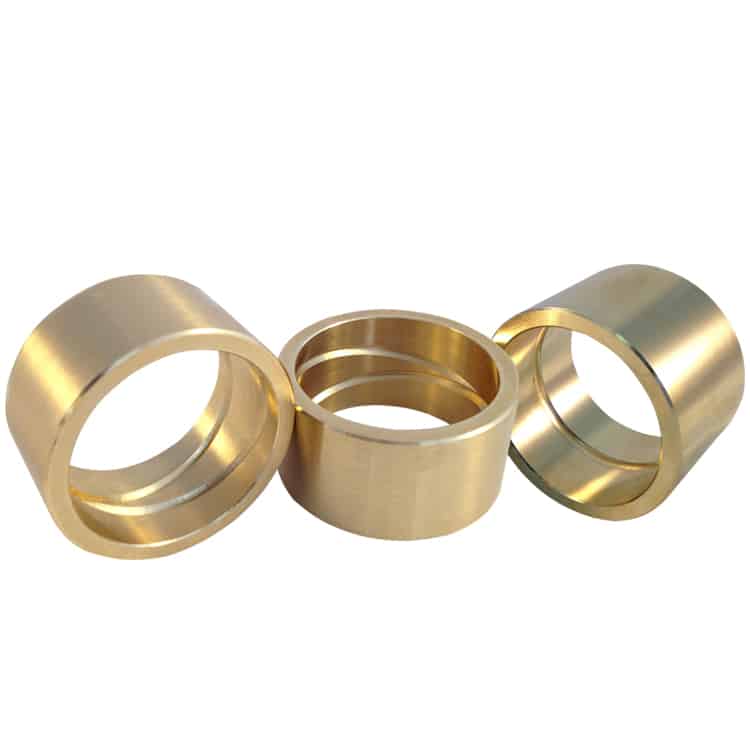
Application Suitability
The choice of a specific cast bronze alloy for bushings depends largely on the dimensional and geometric requirements of each application, along with environmental factors like temperature. The diversity in alloy compositions allows for customization to match precise engineering needs.
Cast Bronze Bushings
For specialized applications, centrifugal casting techniques are employed to produce bronze bushings that meet stringent quality standards, providing excellent uniformity and material properties.
This detailed overview aims to assist engineers and CNC operators in selecting the best bronze alloy for their specific needs, ensuring optimal performance and longevity of the components they produce. Whether it’s for automotive, marine, or industrial machinery, understanding these specifications is crucial for making informed decisions about material selection.
Understanding Casting Copper Alloy Processing Technology
Casting copper alloys involves several technical considerations to ensure the production of high-quality castings. Here’s a detailed look at the key aspects of processing technology for casting copper alloys:
- Castability
- Definition: Castability refers to the capability of metal materials to produce defect-free castings through the casting process.
- Components:
- Fluidity: This is the ability of the molten metal to completely fill the mold, ensuring detailed and precise castings.
- Shrinkage: Refers to the reduction in volume of the metal as it solidifies in the mold. Managing shrinkage is crucial to prevent warping or internal stresses in the casting.
- Segregation: During cooling and solidification, the differing crystallization rates can lead to uneven distribution of chemical compositions and structures within the metal, affecting the overall quality and properties of the casting.
- Malleability
- Definition: Malleability is the property that describes how the shape of metal can be changed under compression without breaking.
- Relevance: This property is essential for subsequent processing techniques such as casting, forging, rolling, stretching, and extrusion. The malleability of a metal is primarily dependent on its chemical composition.
- Machinability
- Definition: Machinability indicates how easily a metal can be transformed into a finished part through machining processes.
- Measurement: The ease of machinability is typically assessed by the surface roughness of the machined part, the permissible cutting speeds, and the wear rate of the cutting tools involved.
- Factors: Several factors influence machinability including the metal’s chemical composition, mechanical properties, thermal conductivity, and degree of work hardening. Metals with higher hardness may be more challenging to machine due to increased tool wear, whereas tough metals might be difficult to cut cleanly.
- Weldability
- Definition: Weldability refers to the suitability of a metal for being welded into a high-quality joint.
- Aspects:
- Bonding Performance: This involves the metal’s propensity to avoid welding defects under specific welding conditions.
- Service Performance: This pertains to how well the welded joint performs under service conditions, matching the operational requirements of the application.
Each of these properties plays a critical role in determining the suitability of copper alloys for various industrial applications. Understanding and managing these characteristics allows for the optimization of casting processes, ensuring the production of high-quality, durable, and functional copper alloy components.
CuSn7Zn4Pb7 BRONZE BUSHING
Centrifugal casting is a common process used in the manufacturing of bronze sleeve bearings. In this context, you’ve mentioned the alloy CuSn7Zn4Pb7, which is a specific type of bronze known as leaded gunmetal or leaded bronze. This alloy is used in the production of bearings due to its excellent wear resistance and good machinability, largely attributed to the presence of lead.
Here’s a simplified breakdown of the process:
- Melting: The CuSn7Zn4Pb7 alloy (composed of approximately 7% tin, 4% zinc, 7% lead, with the remainder being copper) is melted in a furnace until it reaches its liquid state.
- Pouring: The molten alloy is poured into a spinning mold. This mold is rotated around its axis at a high speed. The speed is predetermined based on the desired characteristics of the final product.
- Cooling: As the mold spins, the alloy cools and solidifies from the outside towards the center. This creates a dense, uniform structure with fewer impurities, as impurities and gases are pushed towards the center of the casting due to their lower density.
- Demolding and Finishing: Once the alloy is fully cooled and solidified, the casting is removed from the mold. The bearing may then undergo further processes such as machining, grinding, or polishing to achieve the desired dimensions and surface finish.
- Inspection: The final product is inspected for any defects and to ensure it meets the necessary specifications. This can include visual inspection, dimensional checks, and various non-destructive testing methods.
The finished product, a centrifugally cast bronze sleeve bearing made from the CuSn7Zn4Pb7 alloy, benefits from superior mechanical properties and enhanced durability. These bearings are commonly used in applications that require high load capacity and resistance to wear.
GZ-CuSn12-C Alloy Bronze Bushing
Overview
Centrifugal casting is a widely used process for producing bronze straight bearings, including those made from the GZ-CuSn12-C alloy, a specific type of tin bronze. This alloy is highly valued in bearing manufacturing due to its excellent load-carrying capacity, wear resistance, and good machining properties.
Manufacturing Process
Melting: The GZ-CuSn12-C alloy, which consists of approximately 12% tin and the remainder primarily copper, is heated in a furnace until it reaches a molten state.
Pouring: The molten alloy is poured into a rotating mold. The mold is spun at a specific speed to achieve the desired characteristics in the final product.
Cooling: As the mold rotates, the alloy cools and solidifies from the outside inward. This results in a dense, uniform structure with minimal impurities. Lighter impurities and gases are pushed towards the center by centrifugal force and can be easily removed.
Demolding and Finishing: Once the alloy has fully cooled and solidified, the casting is removed from the mold. The bearing may then undergo further machining or finishing to achieve the desired dimensions and surface finish.
Inspection: The final bearing is inspected for defects and to ensure it meets the required specifications. This can include visual inspection, dimensional checks, and various non-destructive testing methods.
Alloy Composition
- Copper (Cu): 85-89%
- Tin (Sn): 10.7-13%
- Lead (Pb): ≤0.7%
- Other Elements: Small amounts of Nickel (Ni), Phosphorus (P), Zinc (Zn), Iron (Fe), etc.
Mechanical Properties
- Tensile Strength (Rm): ≥280 N/mm²
- Yield Strength (Rp0.2): ≥150 N/mm²
- Elongation (A): ≥5%
- Hardness: ≥90 HB
Characteristics
- High strength and hardness
- Excellent wear resistance
- Good machinability
- High corrosion resistance, including seawater
- Suitable for medium to high loads and speeds
- Good resistance to impact loading
Applications
- Heavy-duty gears and bearings
- Worm gear rims, especially in lift and escalator drives
- Highly loaded plain bearings in machine tools
- Sliding plates and wear plates
- Pump bodies for oil and water hydraulics
- Spindle nuts moved under load
Performance
- Can handle sliding speeds up to 20 m/s with hydrodynamic lubrication
- Suitable for operating temperatures up to 260°C
Lubrication
- Requires adequate lubrication for optimal performance
- Good alignment is crucial for longevity
Sliding Partners
- Best paired with surface-hardened shafts (minimum HRC 56-58)
- Cast iron with spheroidal graphite is also suitable as a shaft material
Availability
GZ-CuSn12-C bushings are commonly available in various sizes and forms, including tubular, round, flat, and rectangular bars. They can also be custom-made to specific dimensions and shapes.
Conclusion
When selecting GZ-CuSn12-C bushings, consider the specific load conditions, operating environment, and lubrication requirements of your application to ensure optimal performance and longevity.
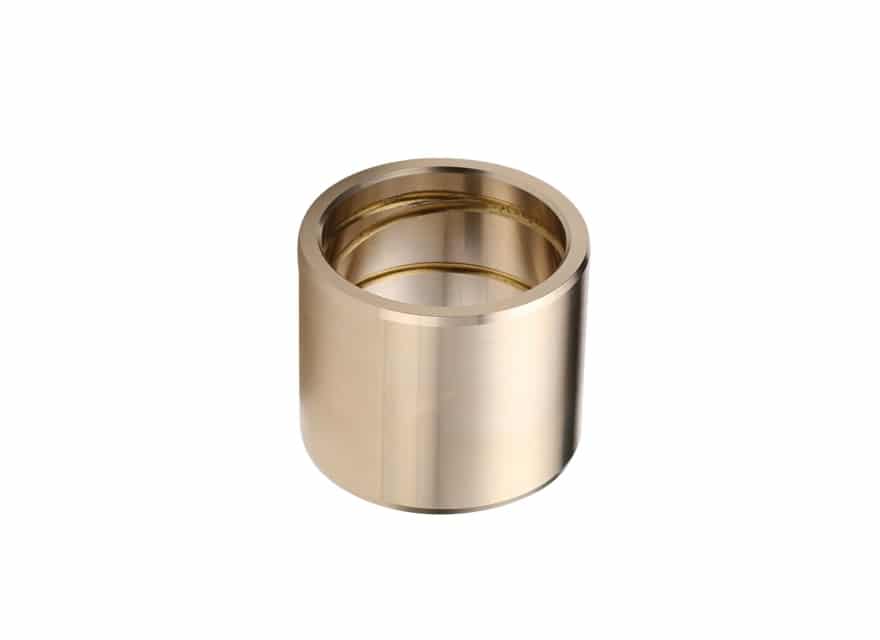
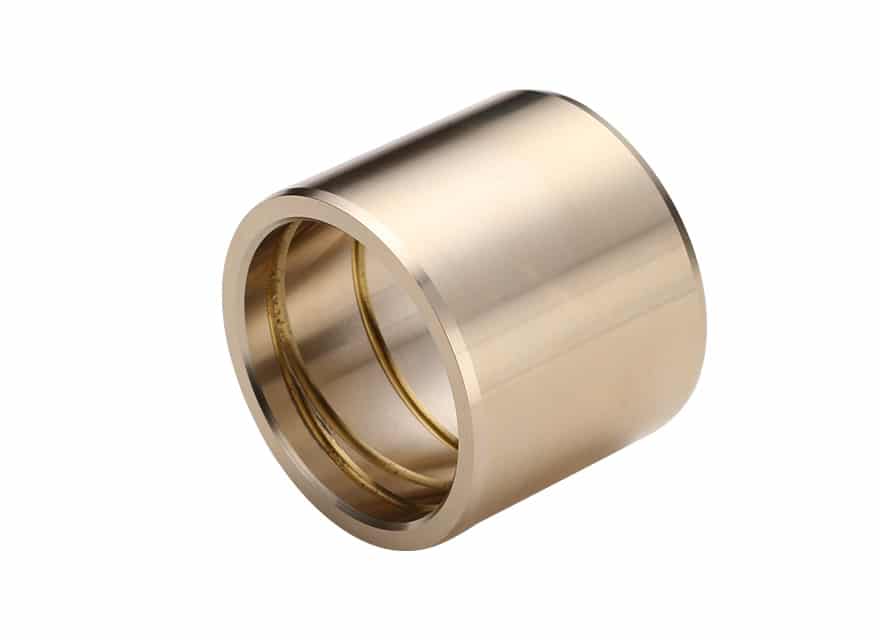
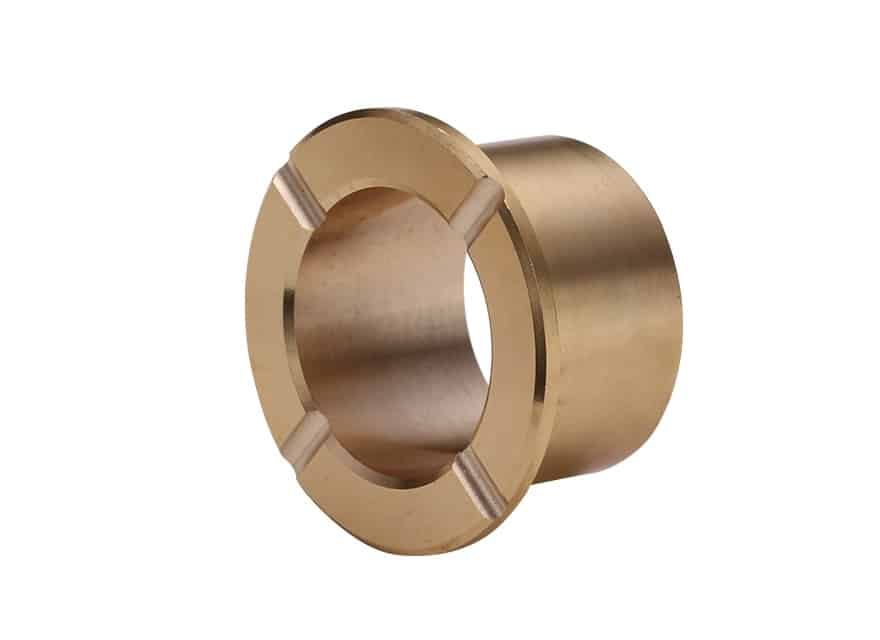
Cast Bronze Bushing Design Factors
The main parameters for determining the size or calculating the service life of your application..
When it comes to purchasing, standard cast bearing sizes are frequently available for online sales. However, if standard sizes do not meet your needs, sizes can be customized based on specific operational data from your application. It’s important to note that cast bronze bearings are generally made to order based on customer requests and may not be immediately available from stock. This means they are not typically ready for immediate shipment.
Forms and Dimensions
The promise of cast bronze bushing high quality, meet your requirement.
Manganese Bronze Bushing Made To Order
Small minimum order value & quantity, fast delivery.

